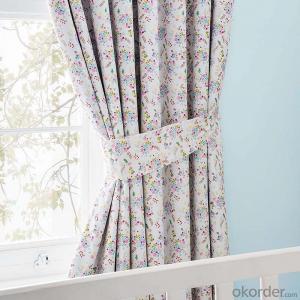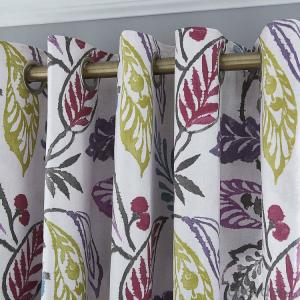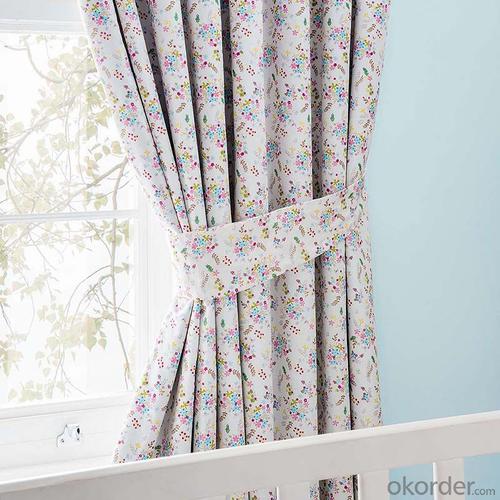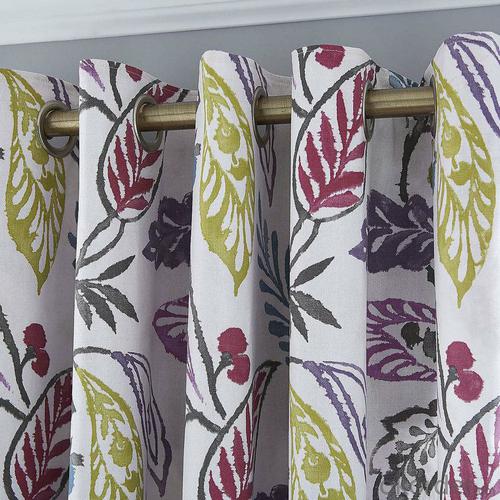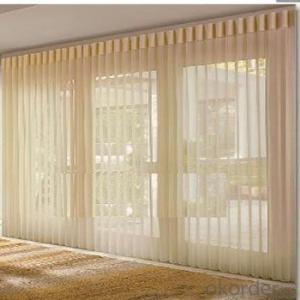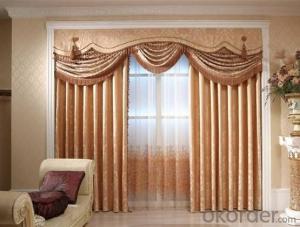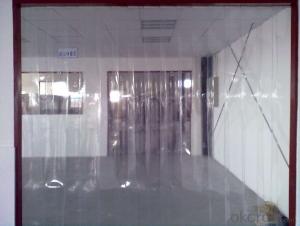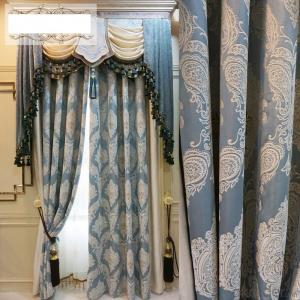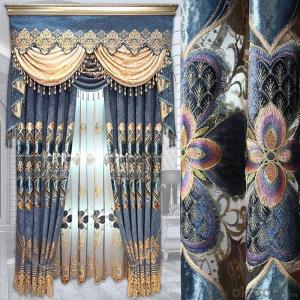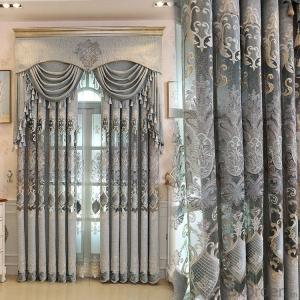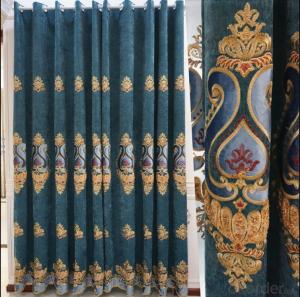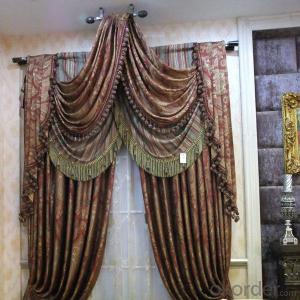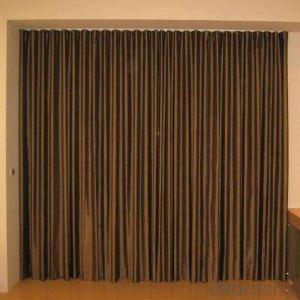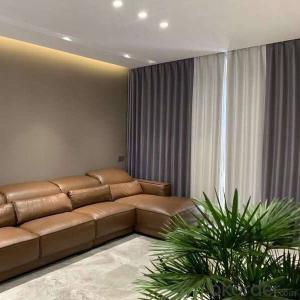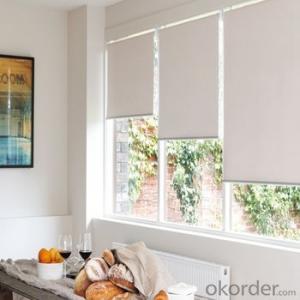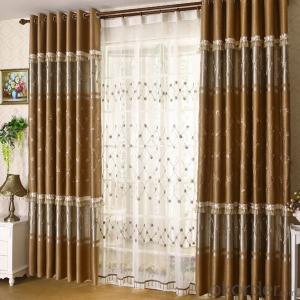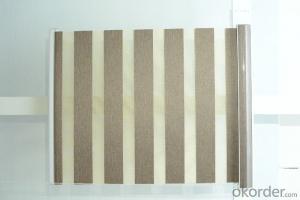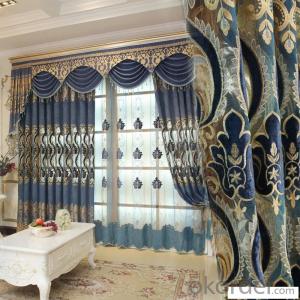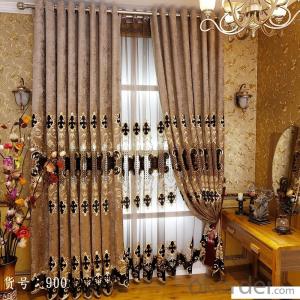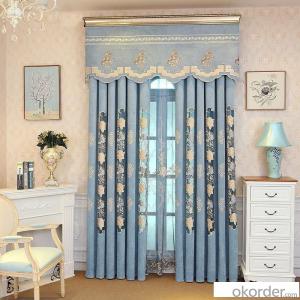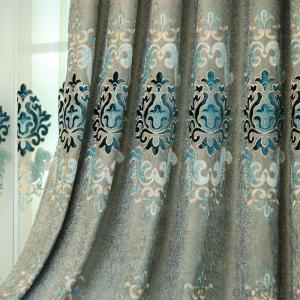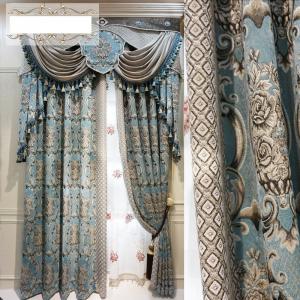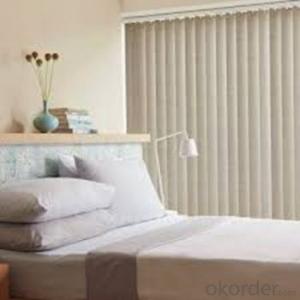Floral Blackout Pencil Pleat Curtains for livingroom
- Loading Port:
- China main port
- Payment Terms:
- TT OR LC
- Min Order Qty:
- 1 roll
- Supply Capability:
- 10000 roll/month
OKorder Service Pledge
OKorder Financial Service
You Might Also Like
Specifications
Material:
100% Polyester, 100% Polyester
Style:
Plain, Fresh
Pattern:
Printed, Printed
Location:
Living Room, Living Room
Technics:
Woven, Woven
Use:
Cafe, Home, Hospital, Hotel, Office, Blackout Curtain, Cafe, Home, Hotel, Office
Feature:
Blackout, Plaid Blackout Curtain, Blackout, Flame Retardant, Insulated
Place of Origin:
Zhejiang, China (Mainland), Zhejiang, China (Mainland)
Brand Name:
QILIAN
Model Number:
QL-YB1000085126
Color:
As Requirement
MOQ:
1set
Packaging & Delivery
Packaging Details:
1.40-60meters per roll
2.rolled on strong tube inside,packed into plastic bag with PVC bag outside
3. Packing way can up to customer's request
Sample
this sample is to be used as to confirm everything before order. It's flexible.
Sample time 5-7work days for samples if stock avaliable
Delivery Detail:
10-25 days after payment confirmed
Product Description
| Specification | |||
| Brand: | QILIAN | Item Name: | Blackout Curtain |
| Item No: | QL-YB1000085126 | Size: | 45x48,45x54,45x72,45x84 ect |
| Country of origin: | Made In China | Colour: | Multi-color |
| Raw Materials: | 100 polyester | Moq: | 1000 pair |
| Sample Time: | 5-7 days | ||
| Delivery time: | 15-25 days after payment | ||
| Payment: | L/C, T/T, West Union,Moneygram | ||
| Packing: | A. For curtain fabrics,double fold rolling,four fold rolling or rolled on strong tubes packing with label and sticker. | ||
| B. For ready made curtains,each PC will be packed in PVC bag+insert and cardboard. | |||
| C. Per customer's request | |||
Picture Show
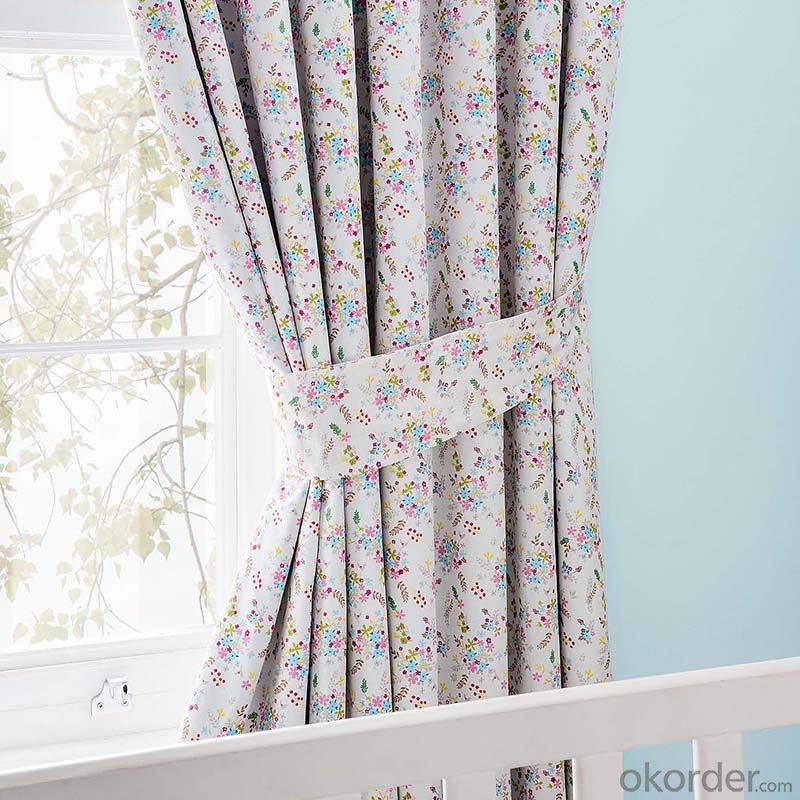
Packaging & Shipping
A. For curtain fabrics,double fold rolling,four fold rolling or rolled on strong tubes packing with label and sticker.
B. For ready made curtains,each PC will be packed in PVC bag+insert and cardboard.
C. Per customer's request
about us
CNBM International Corporation (CNBM International) is the most important trading platform of CNBM Group Corporation, a state-owned company under the direct supervision of State-owned Assets Supervision and Administration Commission of the State Council.
Since 2004, the trading volume of CNBM International has been doubled in 5 successive years owing to the support of superior corporations and effort of all staff. Meanwhile, we have established strategic partnerships with hundreds of domestic manufacturers and sound business relations with clients from over 120 countries. Currently, we have wholly-owned overseas subsidiaries and branches in 5 countries with a view to realize localization, which also represents an essential progress in our globalization target.
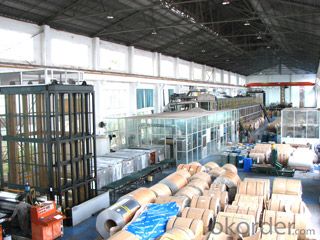

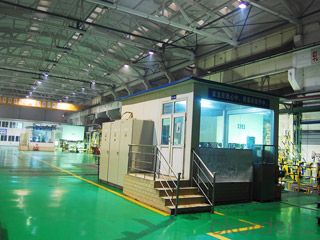
- Q: What are the best curtain options for a modern bohemian decor style?
- The best curtain options for a modern bohemian decor style would be lightweight and flowy fabrics like sheer or linen curtains in earthy tones or vibrant patterns. Incorporating natural materials such as bamboo or macrame can also add a bohemian touch.
- Q: How do I choose curtains for a home library?
- When choosing curtains for a home library, there are a few factors to consider in order to create a cozy and functional space. Here are some tips to help you make the right choice: 1. Light control: Determine the level of natural light you want in your library. If you prefer a bright and airy space, opt for sheer curtains or lightweight fabrics that allow light to filter through. On the other hand, if you want to create a darker and more intimate atmosphere, go for thicker curtains or blackout options to effectively block out sunlight. 2. Privacy: Consider the level of privacy you desire in your library. If you have windows facing a busy street or neighboring houses, you may want to choose curtains that offer more coverage and opacity. Thicker fabrics or curtains with lining can help ensure privacy. 3. Style and aesthetics: Think about the overall theme and decor of your home library. Curtains can play a significant role in enhancing the style and atmosphere of the room. For a traditional library, rich and heavy fabrics like velvet or silk can add a touch of elegance. If you have a modern or contemporary library, opt for sleek and minimalistic curtain designs. 4. Color and pattern: Select curtain colors and patterns that complement the existing color scheme of your library. Neutral or earthy tones usually work well, as they create a calm and inviting environment. If you want to add a pop of color or introduce patterns, choose ones that enhance the overall ambiance without overwhelming the space. 5. Functionality: Consider the practical aspects of your curtains. If you plan on frequently opening and closing them, opt for curtains with easy-to-use mechanisms such as grommets or curtain rods. Additionally, ensure that the length and width of the curtains are appropriate for your windows, allowing for full coverage when closed. 6. Maintenance: Take into account the level of maintenance required for your curtains. Some fabrics may be more prone to dust or require special cleaning methods. If you prefer low-maintenance options, choose curtains that are easy to clean and maintain. Remember, the choice of curtains for your home library ultimately depends on your personal preferences and the desired mood you want to create. By considering factors such as light control, privacy, style, color, functionality, and maintenance, you can find the perfect curtains to transform your library into a cozy and inviting space.
- Q: How do I choose curtains for a Scandinavian decor style?
- When choosing curtains for a Scandinavian decor style, opt for simple and minimalistic designs. Consider using light and sheer fabrics in neutral colors such as white, beige, or light gray. Avoid heavy drapes or ornate patterns, instead, go for clean lines and natural textures like linen or cotton. Also, ensure that the curtains let in ample natural light while providing privacy when needed.
- Q: How do I choose the right curtain length for French doors?
- When choosing the right curtain length for French doors, there are a few factors to consider. First, measure the height of the French doors from top to bottom. This will give you an idea of the total length you will need for your curtains. Next, decide on the desired look and functionality of the curtains. If you prefer a more formal and elegant look, you may want the curtains to touch or puddle slightly on the floor. This will create a luxurious and sophisticated appearance. On the other hand, if you prefer a more practical and functional approach, you may want the curtains to hang just above the floor. This will prevent them from dragging on the ground and getting dirty, while still providing privacy and light control. Consider the location of the French doors as well. If they are near a high traffic area or if you have pets or children, it might be more practical to choose a shorter curtain length to avoid any tripping hazards or damage. Lastly, take into account the style and design of the French doors and the surrounding decor. Consider the colors, patterns, and textures of the curtains to ensure they complement and enhance the overall aesthetic of the room. In summary, choosing the right curtain length for French doors involves measuring the height, considering the desired look and functionality, taking into account the location and potential hazards, and ensuring the curtains match the style of the doors and the room.
- Q: Can curtains be used to create a sense of privacy in an open-concept space?
- Yes, curtains can be used effectively to create a sense of privacy in an open-concept space. By strategically placing curtains, you can section off different areas, providing a visual barrier that separates one space from another. This allows for a greater level of privacy and intimacy within an otherwise open and interconnected environment.
- Q: Can curtains be used to divide a large room?
- Yes, curtains can indeed be used to divide a large room. They provide a flexible and cost-effective solution to create separate spaces within a single room while still allowing for easy passage and visual connection between the divided areas.
- Q: How do I choose curtains for a minimalist home gym?
- When choosing curtains for a minimalist home gym, it's important to consider both functionality and aesthetics. Here are some tips to help you make the right choice: 1. Opt for simplicity: Keep in mind that minimalism is all about clean lines and simplicity. Choose curtains that have a simple design and avoid overly elaborate patterns or embellishments. Solid colors or subtle textures can work well in a minimalist space. 2. Consider natural light: Natural light is key in a home gym as it can create an open and energizing atmosphere. Look for curtains that allow ample sunlight to filter through. Sheer or semi-sheer curtains can be a good option as they provide privacy without blocking too much light. 3. Choose the right fabric: Go for lightweight and breathable fabrics that won't weigh down the space. Linen, cotton, or polyester blends are often good choices. These fabrics are easy to maintain and will allow air to circulate in your gym area. 4. Opt for neutral colors: Neutral colors like white, beige, or gray can help create a calm and serene environment in your minimalist home gym. They also provide a blank canvas for other elements in the space to stand out, such as exercise equipment or motivational artwork. 5. Consider blackout options: If you prefer to control the amount of light entering the gym at certain times, consider adding blackout curtains or blinds. These can be especially useful if you plan on using the space for activities like yoga or meditation, where a darker ambiance is desired. 6. Keep it minimal: Avoid adding excessive layers or heavy drapes that can distract from the minimalist aesthetic. Stick to one layer of curtains or blinds to maintain a clean and uncluttered look. Remember, the goal is to create a space that is visually pleasing and conducive to your workouts. By following these tips, you can choose curtains that complement the minimalist style of your home gym while also fulfilling your functional needs.
- Q: How do I choose the right curtain color for a room with bold wallpaper?
- When choosing a curtain color for a room with bold wallpaper, it's important to strike a balance between complementing the wallpaper and creating a cohesive look. Consider selecting a curtain color that either matches a dominant color in the wallpaper or one that complements the overall color scheme. Additionally, opting for neutral shades like white, cream, or gray can help tone down the boldness of the wallpaper while still adding elegance to the room. Ultimately, it's a matter of personal preference and experimenting with different options to find the perfect combination.
- Q: Can I use curtains to create a formal look?
- Yes, you can definitely use curtains to create a formal look in a room. The choice of curtains, their fabric, color, and style can greatly impact the overall ambiance and formality of a space. To achieve a formal look, consider using curtains made from luxurious fabrics such as silk, velvet, or brocade, as these materials often exude elegance and sophistication. Opt for floor-length curtains that gently puddle on the floor, as this adds a touch of opulence. Additionally, selecting curtains in rich, deep colors like burgundy, navy blue, or charcoal gray can contribute to a more formal atmosphere. Finally, choose curtain styles that are tailored and structured, such as pinch pleats or goblet pleats, which create a polished and refined appearance. By carefully selecting curtains that embody these elements, you can certainly create a formal and sophisticated look in any room.
- Q: Can curtains block out noise?
- Yes, curtains can help to block out noise to a certain extent. While they may not completely eliminate all noise, thick and heavy curtains can provide some sound insulation by absorbing and dampening external sounds. The thickness and material of the curtains play an important role in their ability to block out noise. Curtains made of dense fabrics like velvet or suede tend to be more effective at reducing noise compared to lightweight fabrics. Additionally, curtains with multiple layers or those specifically designed for soundproofing purposes can further enhance their noise-blocking capabilities. However, it is important to note that curtains alone may not be enough to completely eliminate all noise, especially if the noise is very loud or high-pitched. In such cases, combining curtains with other soundproofing measures like double-glazed windows, weatherstripping, or acoustic panels can provide better noise reduction results.
Send your message to us
Floral Blackout Pencil Pleat Curtains for livingroom
- Loading Port:
- China main port
- Payment Terms:
- TT OR LC
- Min Order Qty:
- 1 roll
- Supply Capability:
- 10000 roll/month
OKorder Service Pledge
OKorder Financial Service
Similar products
Hot products
Hot Searches
